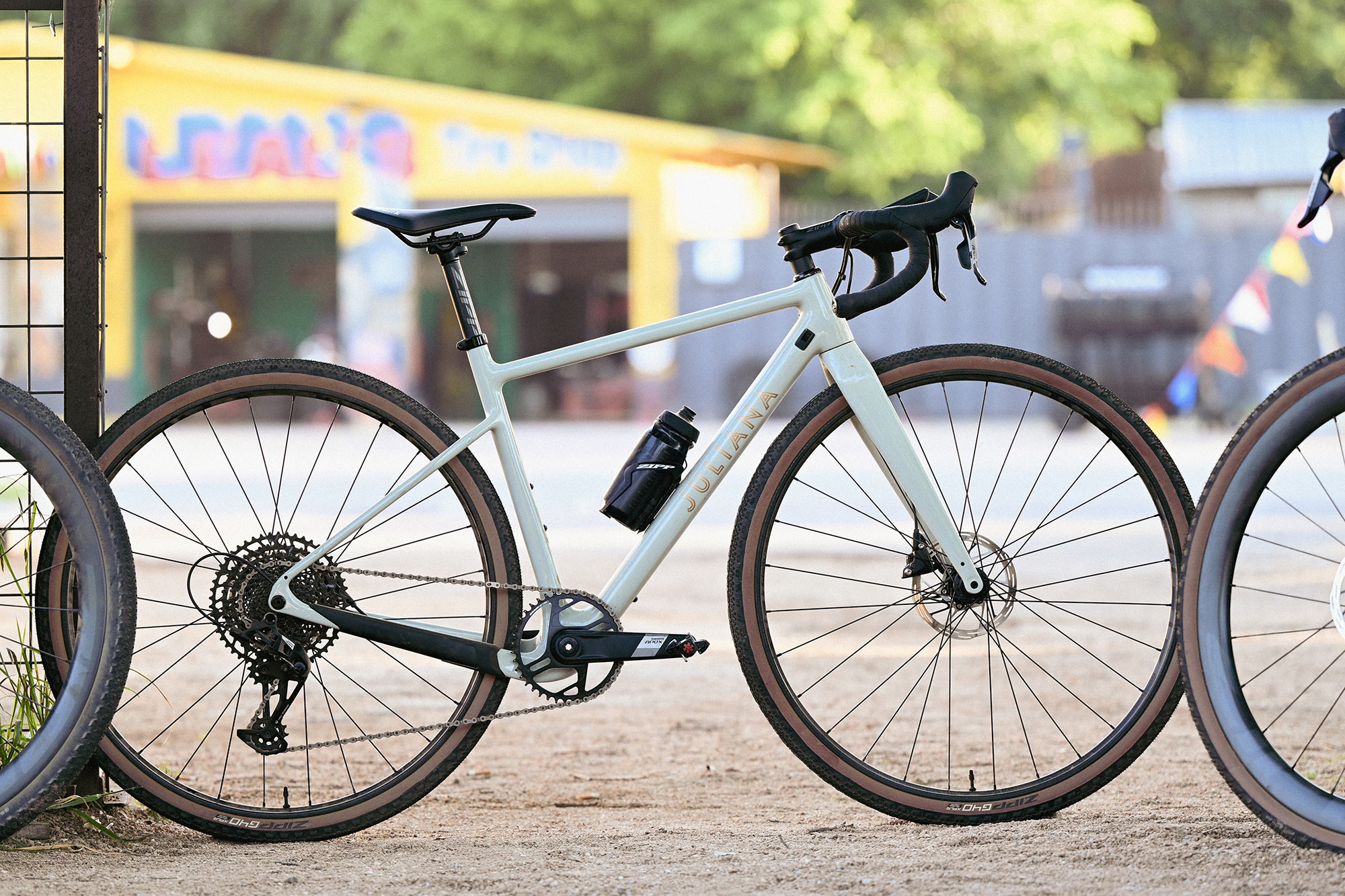The new SRAM Apex is designed for the core rider that wants something simple and intuitive, but fully featured. It’s for roadies that want to try gravel, or mountain bikers that want a drop bar bike, with gearing and options to fit every type of rider.
It’s now 1×12 only, dropping the front derailleur and adding a cog, making it SRAM’s first 12-speed DoubleTap mechanical road group (finally!). And there’s a wireless AXS group, too, letting you use batteries, or not, and choose between 11-44 XPLR gravel gearing or 11-50 Eagle mountain bike gearing.
Apex 1×12 Gearing
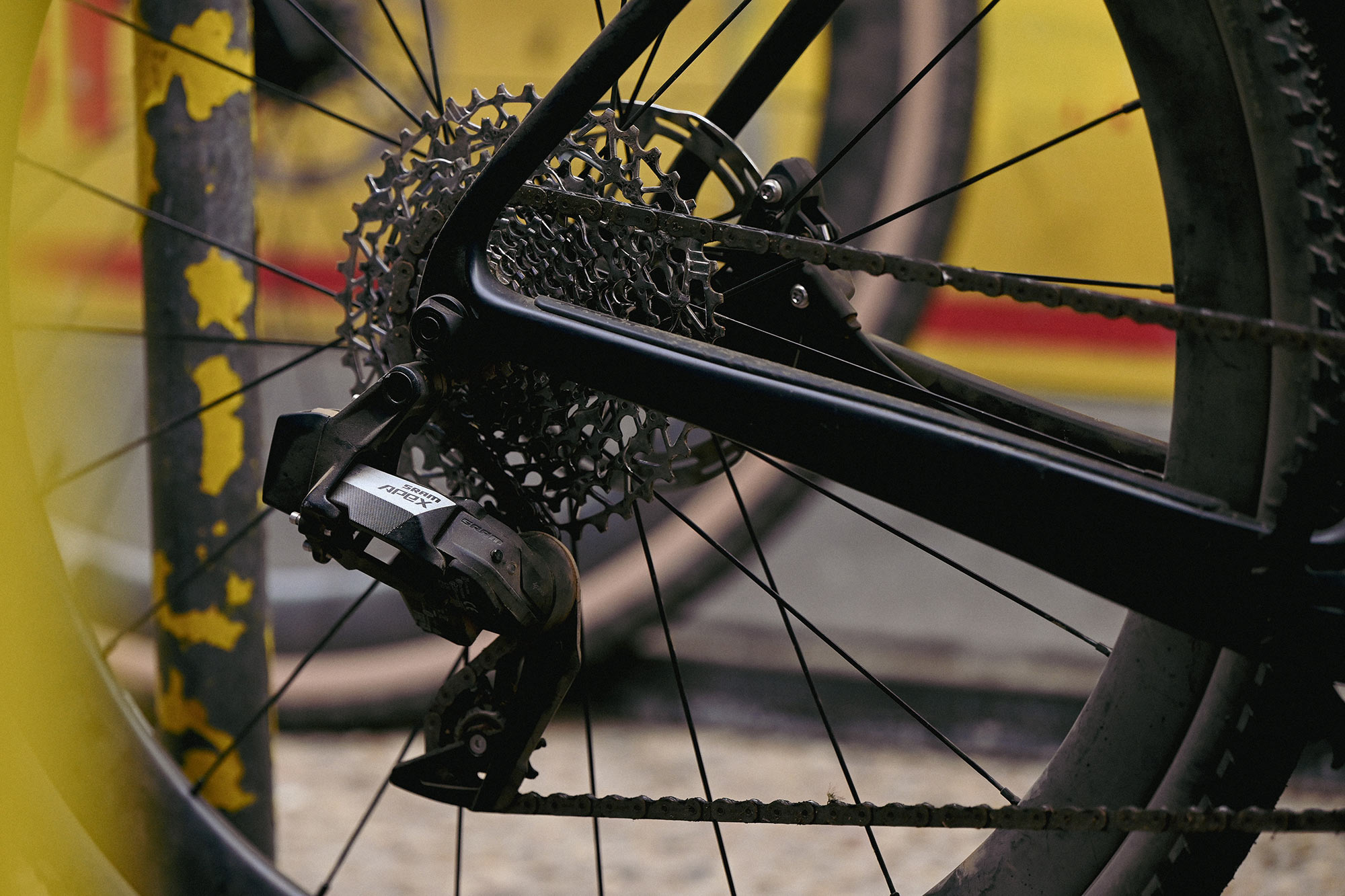
SRAM’s XPLR gravel groups have a cassette that sits between road and mountain bike range, with 10-44 cassettes, giving groadies the closer gear steps they like for drop bar bikes, but with the necessary range for off-road exploration.
Eagle riders, however, want all the range and might want to pack more stuff and need the easiest gear they can for bigger, bolder adventures. For them, the 10-50 and 10-52 cassettes work.
For the new Apex groups, the only key difference is the cassette fits on a standard HG freehub body, using an 11-tooth small cog for both XPLR (11-44) and Eagle (11-50) cassettes:
- XPLR 11-44: 11-12-13-15-17-19-21-24-28-32-38-44
- EAGLE 11-50: 11-13-15-17-19-22-25-28-32-36-42-50
Shared Parts & Differences
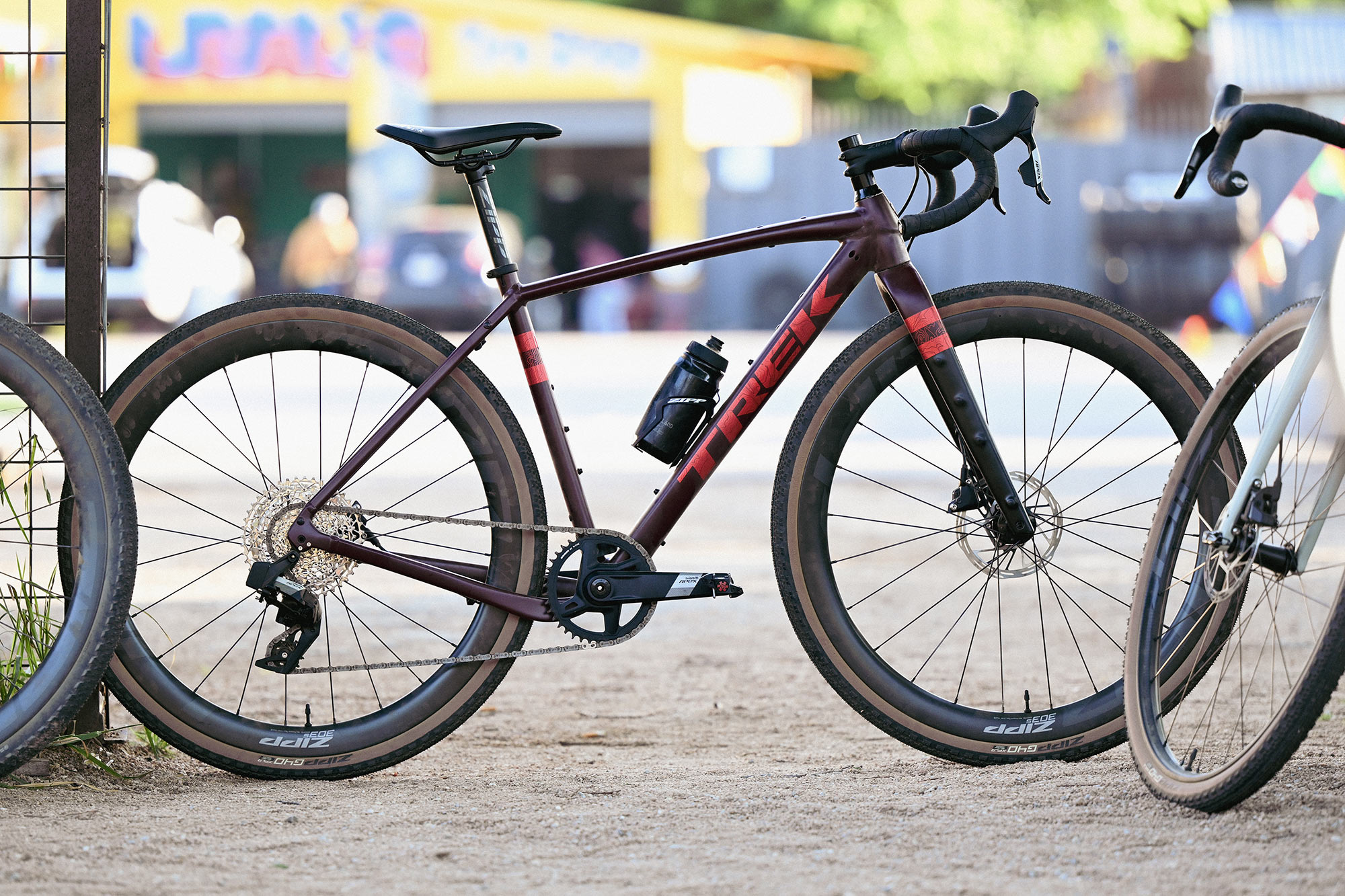
The beauty of the new groups are that almost every part is interchangeable with their other groups. Any XPLR cassette, crank, or (AXS) derailleur can be subbed in for other XPLR parts.
Basically, anything from the new Apex XPLR group is compatible with any of their XPLR parts. The Apex XPLR AXS derailleurs will shift the 10-44, 11-44, and the smaller 10-36 road cassette, but the Apex Mechanical will only shift the 10/11-44 cassettes.
And any of the Apex Eagle parts are compatible with other Eagle parts (except T-Type), and both AXS & mechanical versions work with the larger 10-52 cassettes, too. So, you could upgrade the crankset or cassette (or both) and still have a 1×12 mechanical group, only lighter.
All of the Apex derailleurs have Cage Lock and a spring-loaded clutch (not the hydraulic Orbit damper from the road groups), and AXS derailleurs get their Overload Clutch that decouples the shifting motor in the event of an impact, then resets automatically.
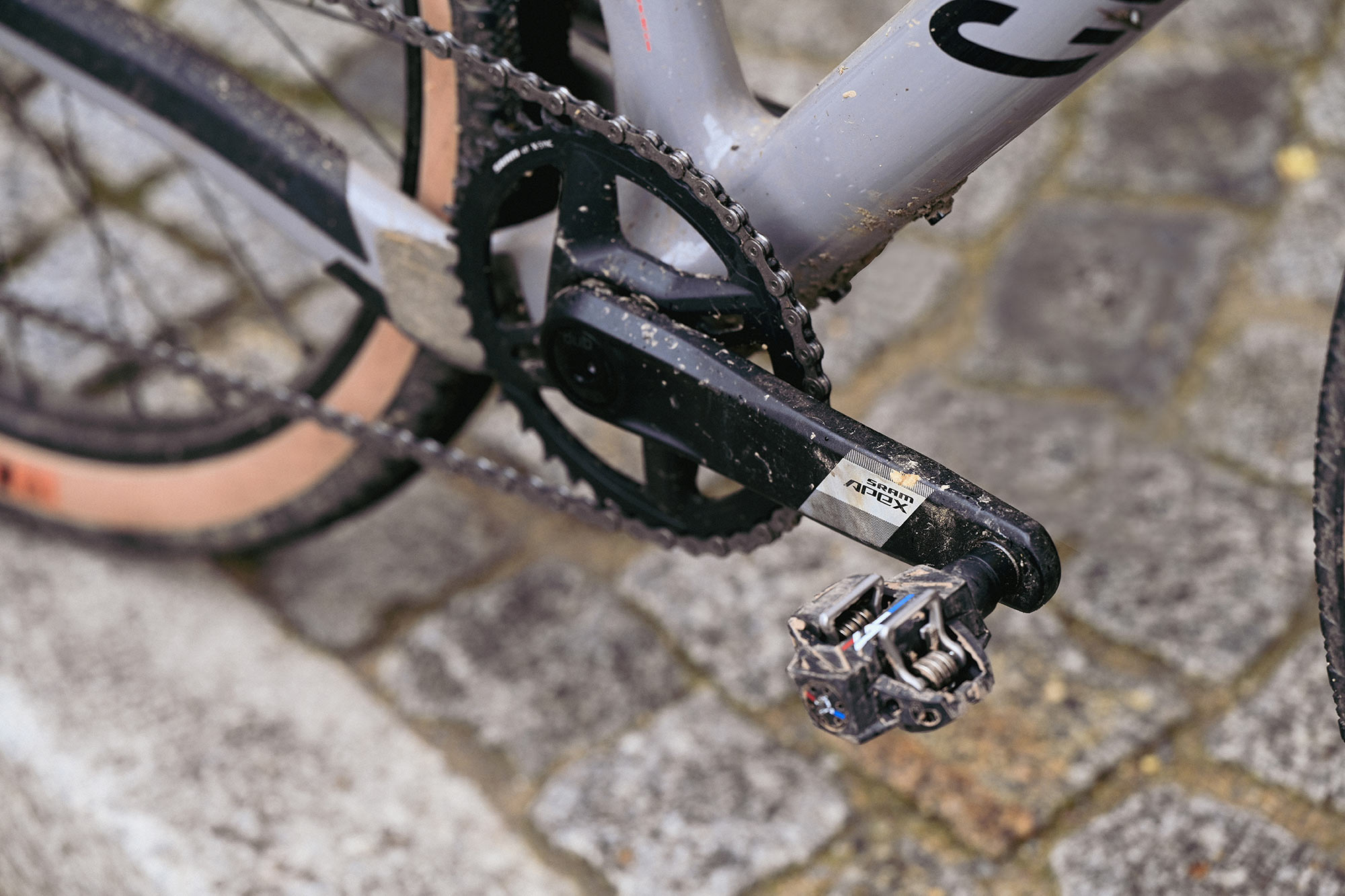
The Apex Crankset is essentially the same as Rival, but with new graphics and finish, including the aftermarket direct mount alloy chainring. For OE, you may find a new steel chainring, too. There’s even a spindle-based power meter option, same as the Rival group.
It comes only with the longer spindle to fit both road and MTB bottom bracket standards. It’s designed around a 47.5mm chainline, which offers more tire clearance than the narrower 45mm chainline available on higher performance road groups.
New Apex FlatTop chain is the same as the others, but without the Nickel-Chrome finish.
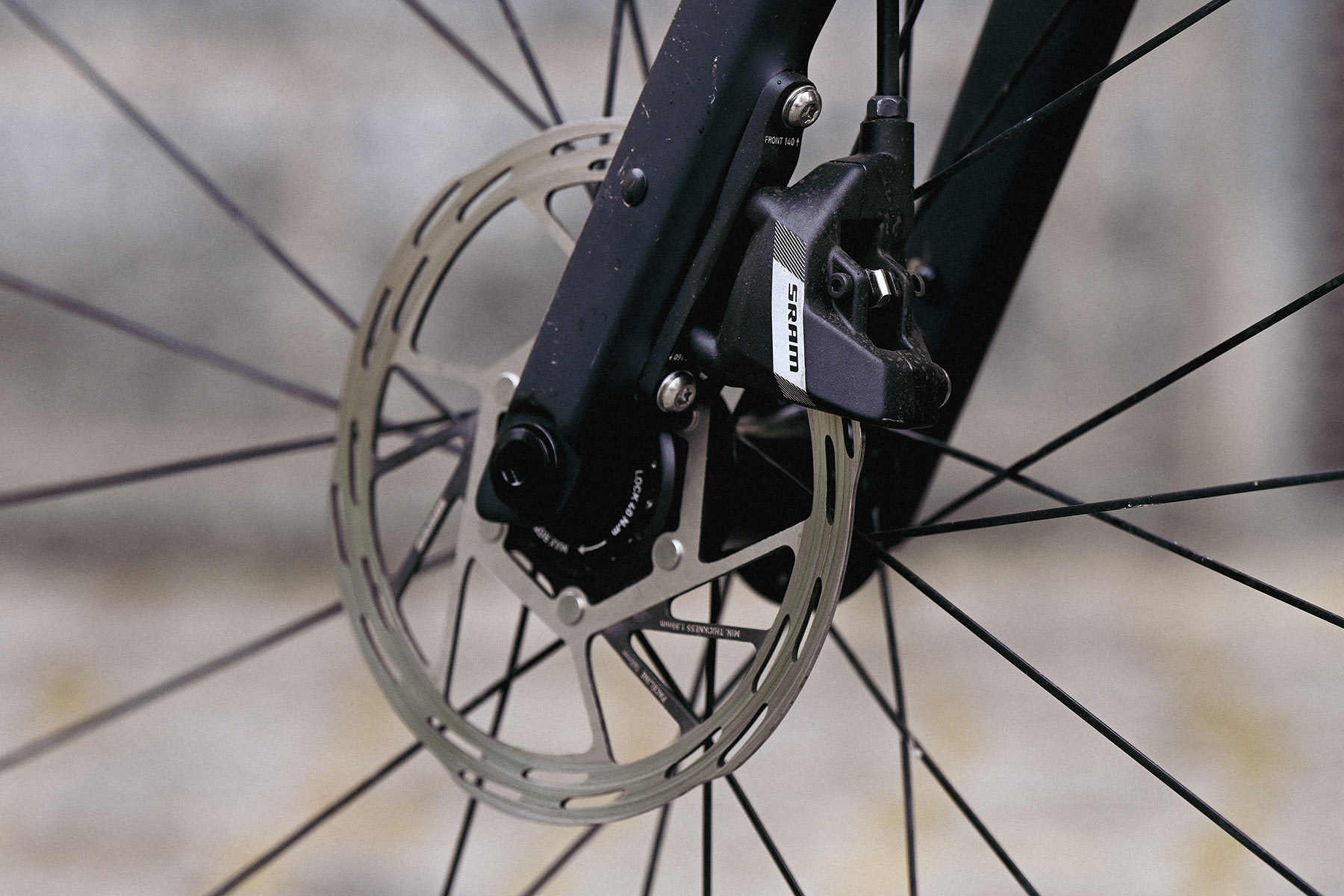
The brakes are all Flat Mount now, too, and they’re basically a Flat Mount version of their Level MTB brakes. It uses the same pads as their other road brakes, but doesn’t get the Bleeding Edge bleed ports like the higher-end stuff.
There’s also an Apex flat bar brake lever, which can pair with any of their Eagle 12-speed mountain bike shifters, mechanical or AXS depending on which derailleur you choose.
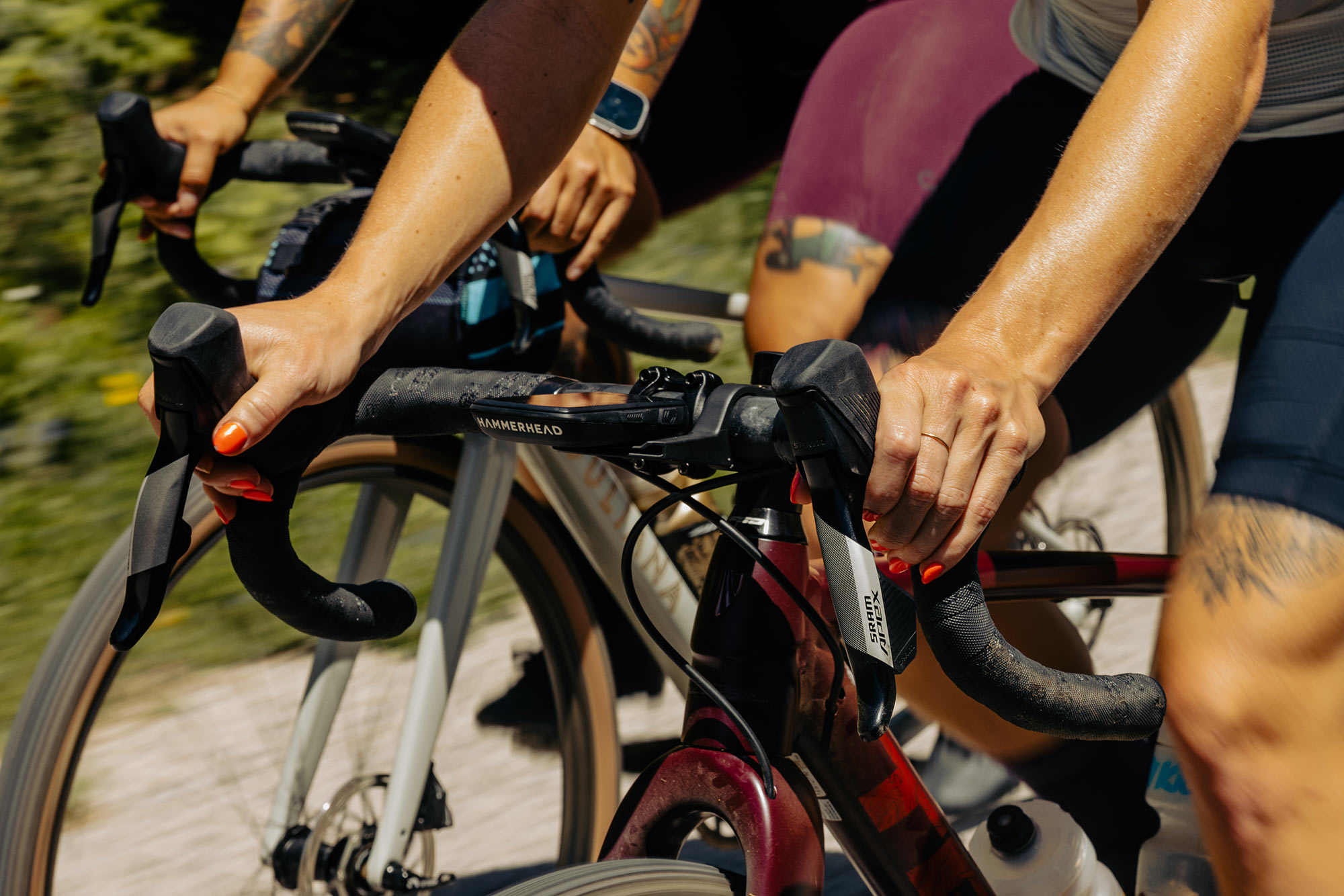
The new brake levers are broad, with a flatter radius providing a bigger area for your finger to pull on.
Compared to Rival, the Apex brake lever is stamped, not forged, the derailleur pulleys have bushings rather bearings, and the cassettes start at 11 rather than 10. And Apex isn’t as shiny.
Apex AXS Wireless Details
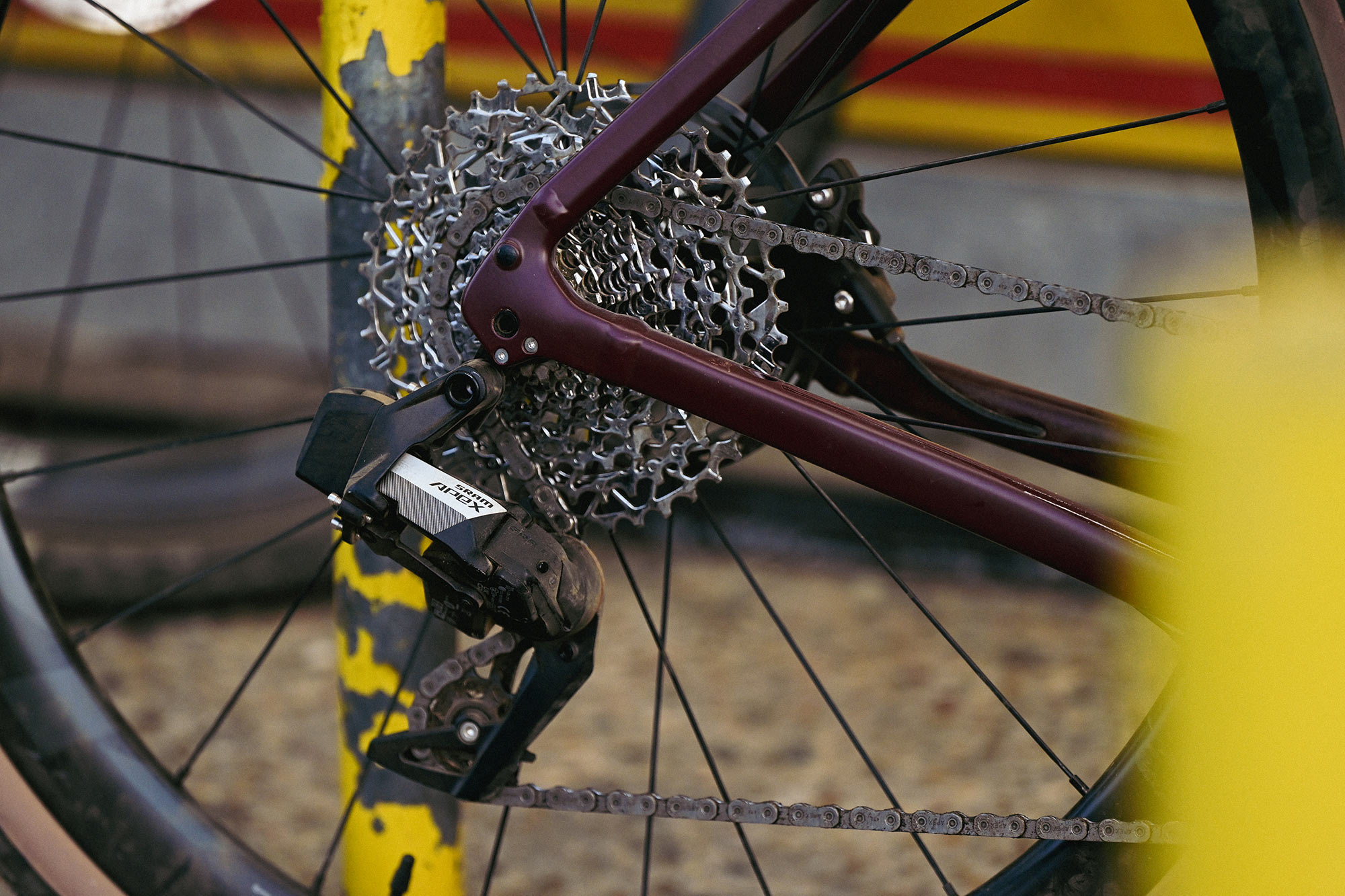
The XPLR derailleur uses the same spring clutch chain management as the Rival derailleur for both AXS and mechanical versions, similar to their mountain bike derailleurs, but with no Cage Lock. These will use the standard road Flattop chain.
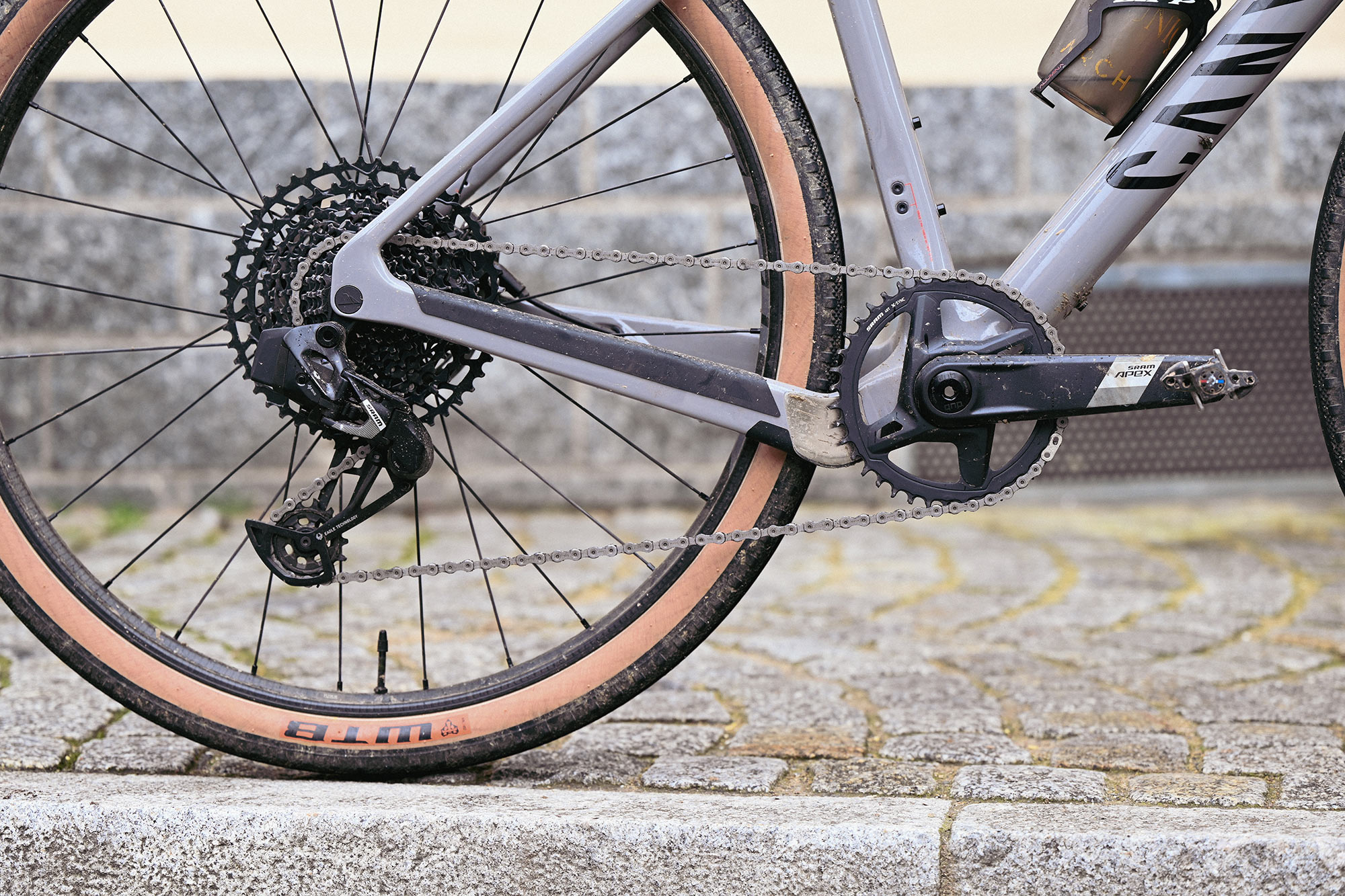
If you wanted to do a “mullet” drivetrain with a mountain bike cassette and derailleur, there’s a new X1 Eagle rear derailleur that’s similar to GX but with different materials, and it’ll be an OE-only option. If you wanted to build your own, you’ll need to get a GX AXS derailleur and a standard Eagle chain (not the new T-Type MTB Flattop chain).
Put another way, if you buy a complete bike with an Apex Eagle AXS build, you’ll get this X1 derailleur. If you’re buying an aftermarket “Apex Eagle” group to add to your existing bike, you’ll get a GX AXS derailleur.
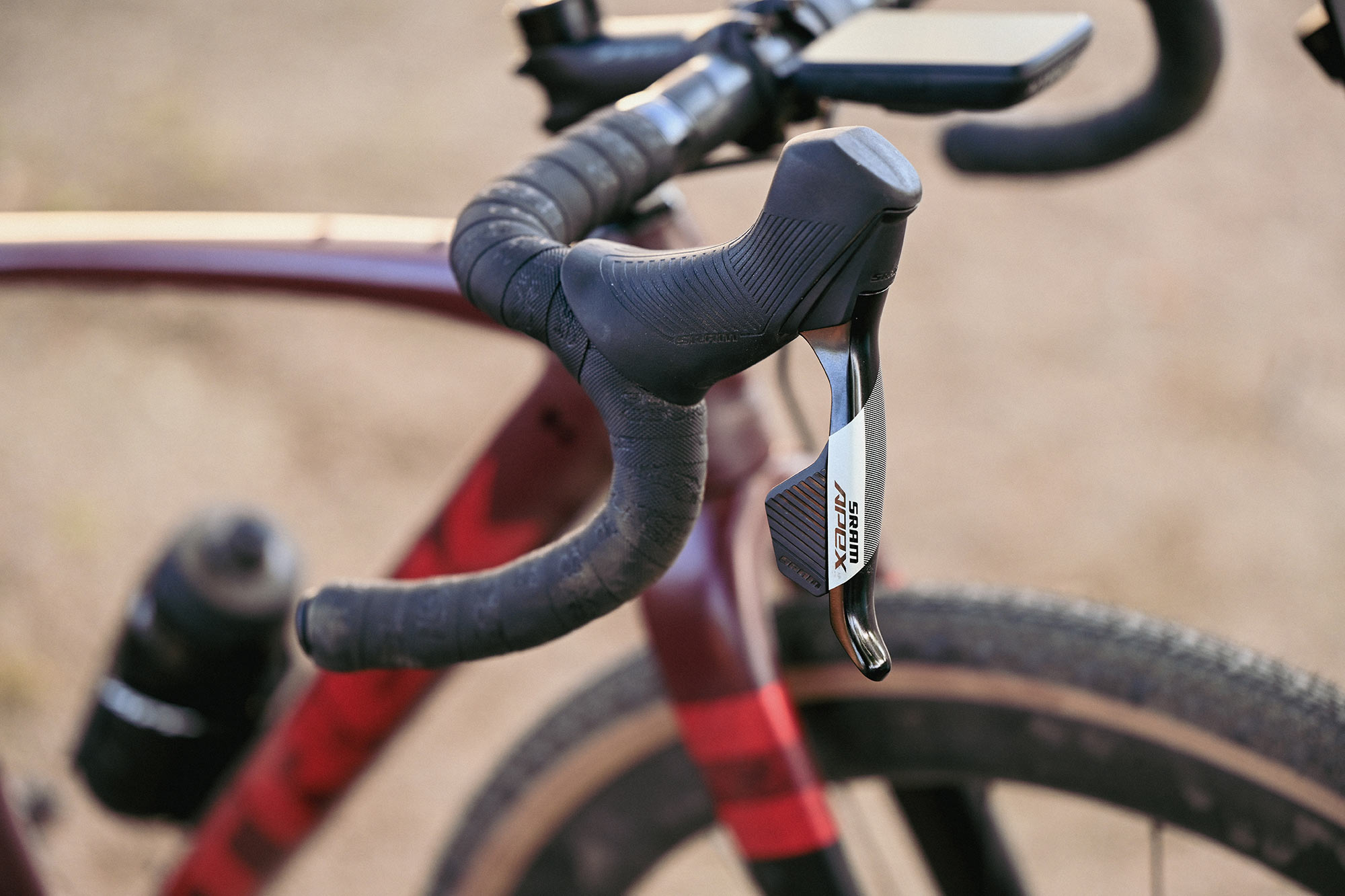
Shifters have the same ergonomics as the latest Force and Rival groups, with a smaller hood circumference and easier-to-reach levers.
Apex Mechanical Details
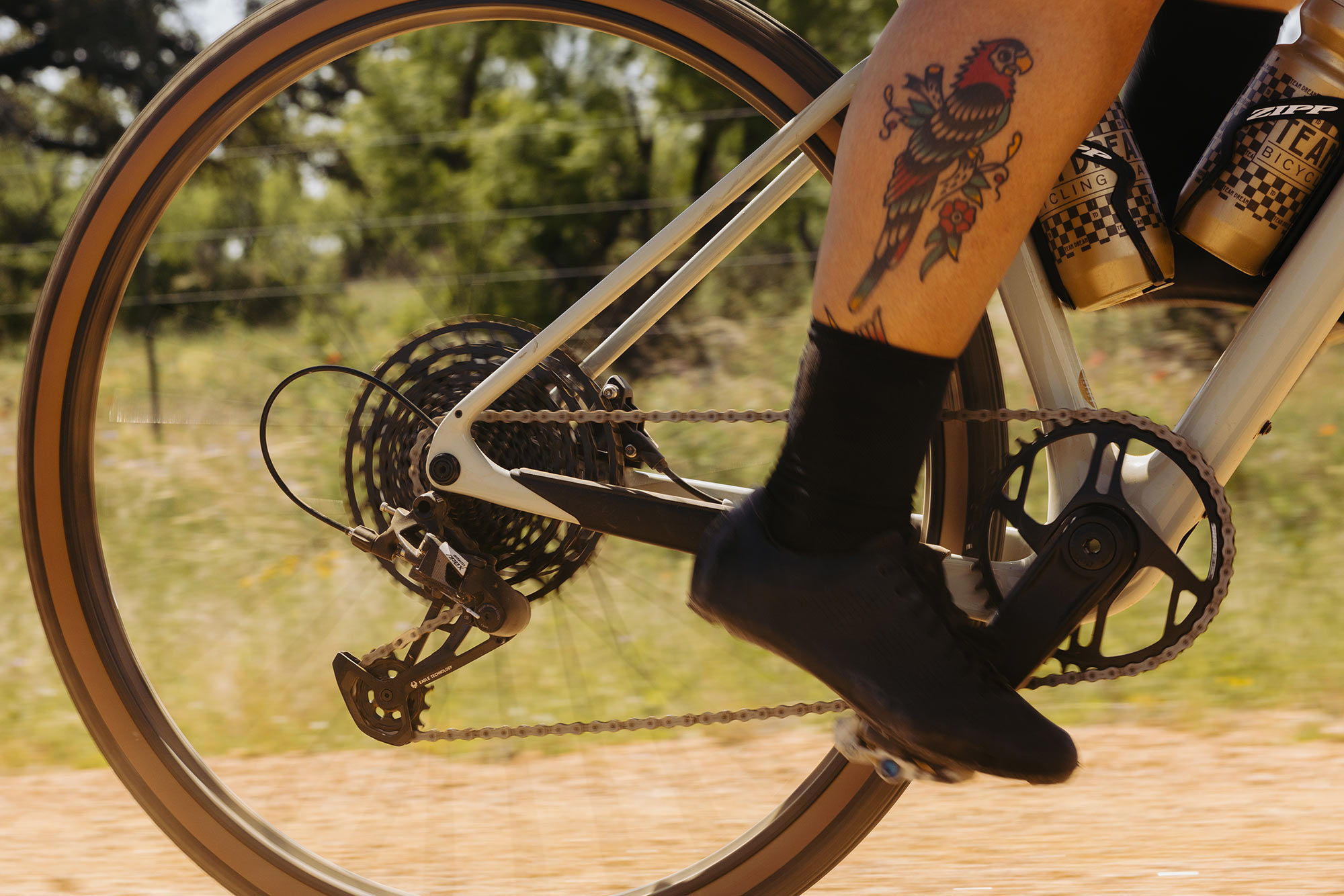
Why did it take so long for them to make a 12-speed mechanical road group? Because they wanted to get the gearing and the details right, and make sure it was properly positioned in the market.
When their first 1×11 groups came out and started getting used for the nascent gravel scene, people were pairing road shifters with mountain bike cassettes and cobbling stuff together. Now, with SRAM’s XPLR groups having dialed in their gearing and concepts, they’ve got two new derailleurs and an all-new shifter to give you the options you want.

The shifters are paired with the same hydraulic brake levers as the AXS group, but they click through 12 cable-actuated gears. The hood and body are shaped the same as the latest Rival and Force groups, designed for riding more on the hoods.
They use an EAGLE 12-speed gear actuation inside, which means it works with their remaining 12-speed mountain bike derailleurs (more on that compatibility in a minute). The DoubleTap mechanism is pushed up higher into the “pommel” (that part at the front that sticks up), which they say gives you plenty of leverage for easy shift actuation.
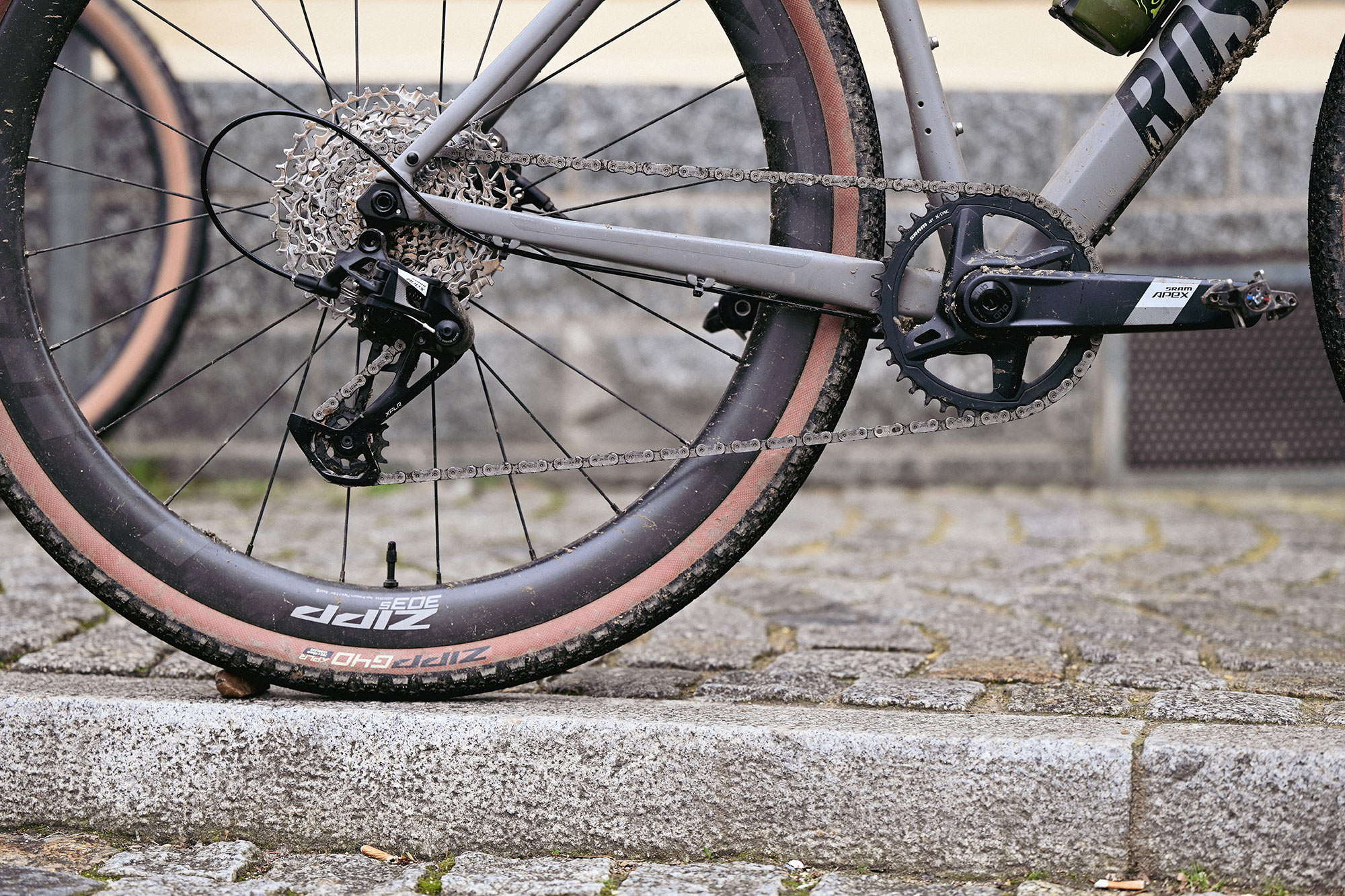
To make this work, they modified their GX mechanical derailleurs by adding a barrel adjuster on the derailleur’s B-knuckle…because SRAM’s mechanical mountain bike groups put the barrel adjuster on the shifter, not the derailleur. And they made two versions of it, one for Eagle cassettes and one for XPLR cassettes.
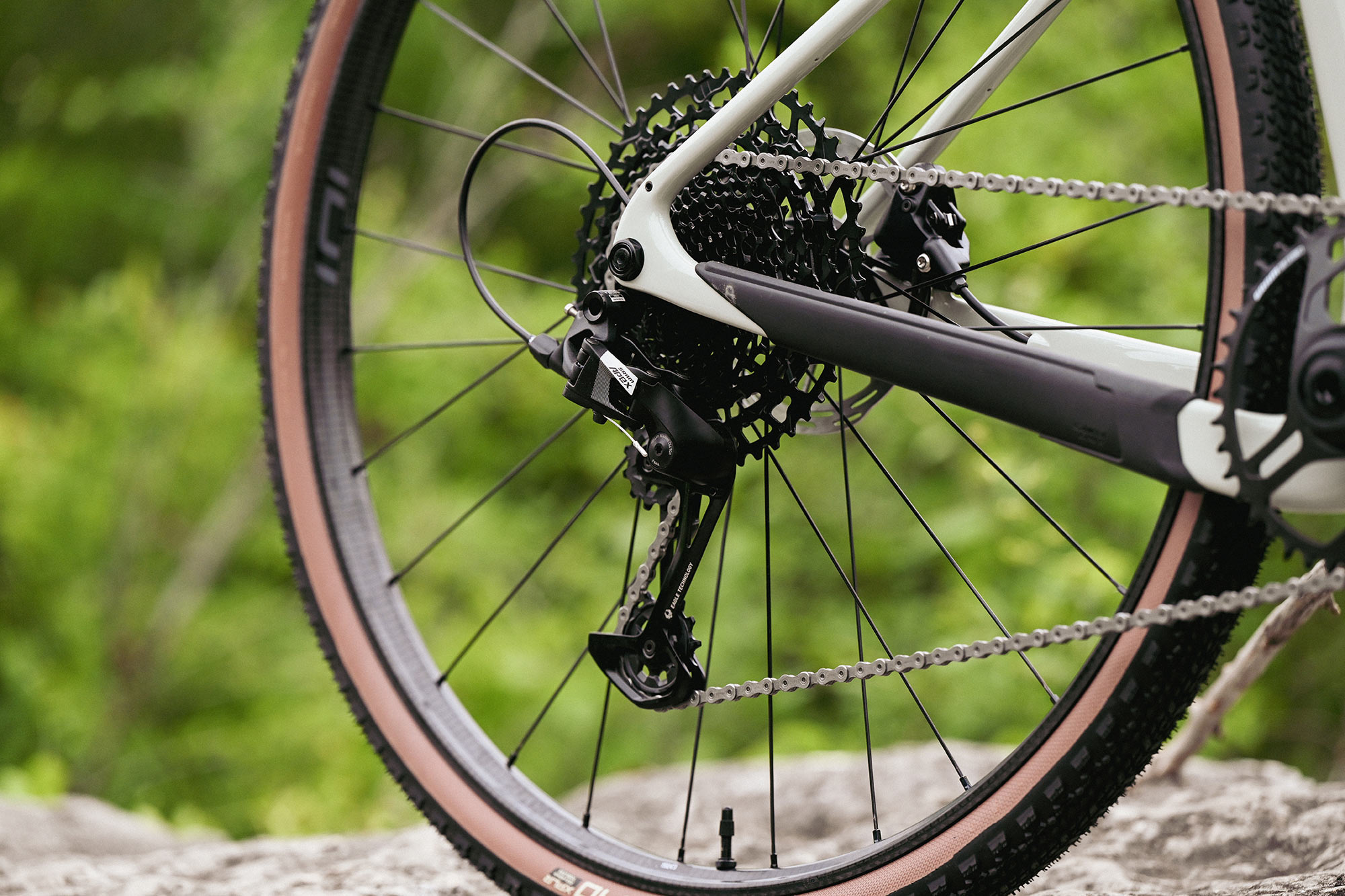
For Eagle, it’s essentially a GX mechanical MTB derailleur, but with the barrel adjuster. This means that the new Apex mechanical shifters are compatible with GX, XO & XX1 mechanical derailleurs, too, as long as you add an inline barrel adjuster in the cable housing.
For XPLR, there’s a different pulley position and fin to adjust its cable pull ratio, because the cog spacing and position on the 11-44 road/gravel cassette is different than the 11-50 Eagle Cassette.
Which means you can’t just swap cassettes, you’ll need to swap derailleurs, too, if you want to go between XPLR and Eagle. And probably chains to get the proper length.
Pricing & Availability
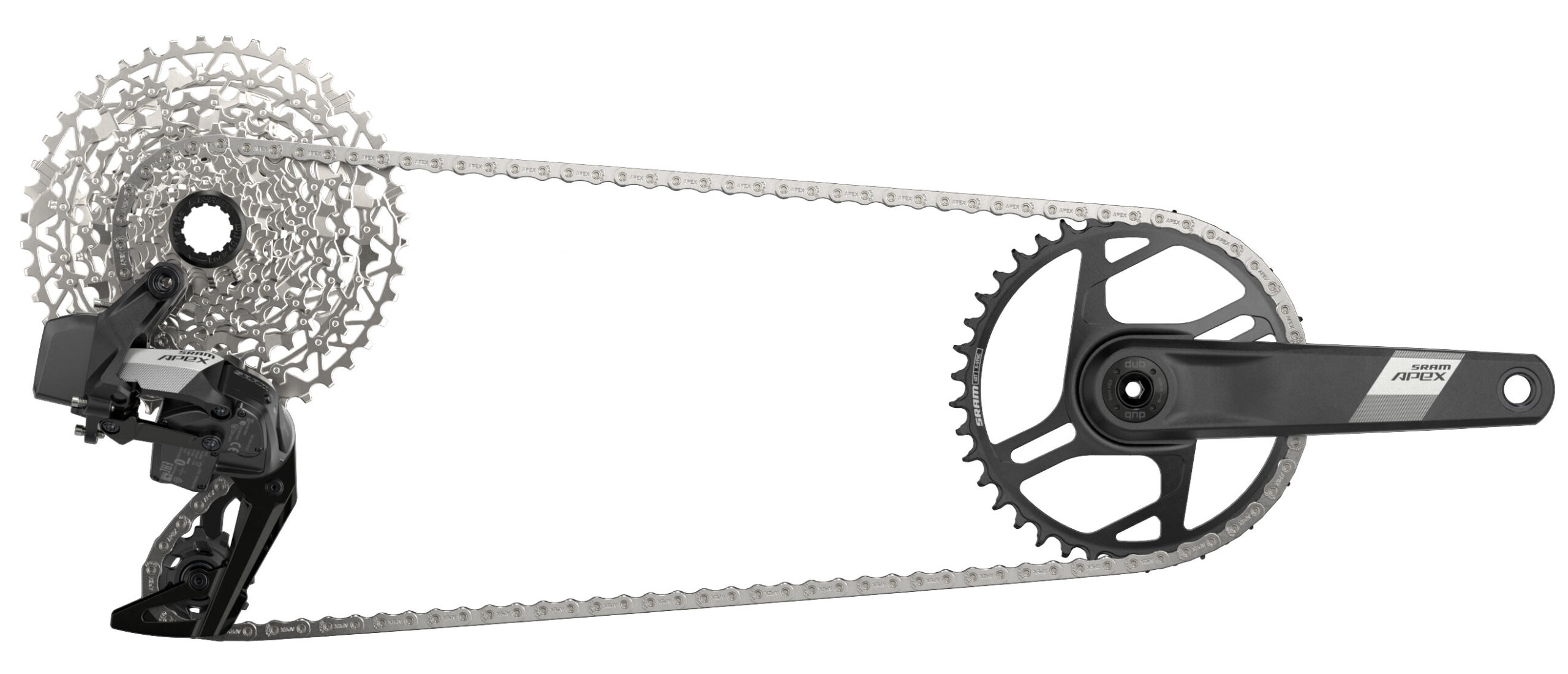
Apex AXS is available June 2023, expect it to show up on bikes ranging from $2,500 to $2800 with Apex AXS.
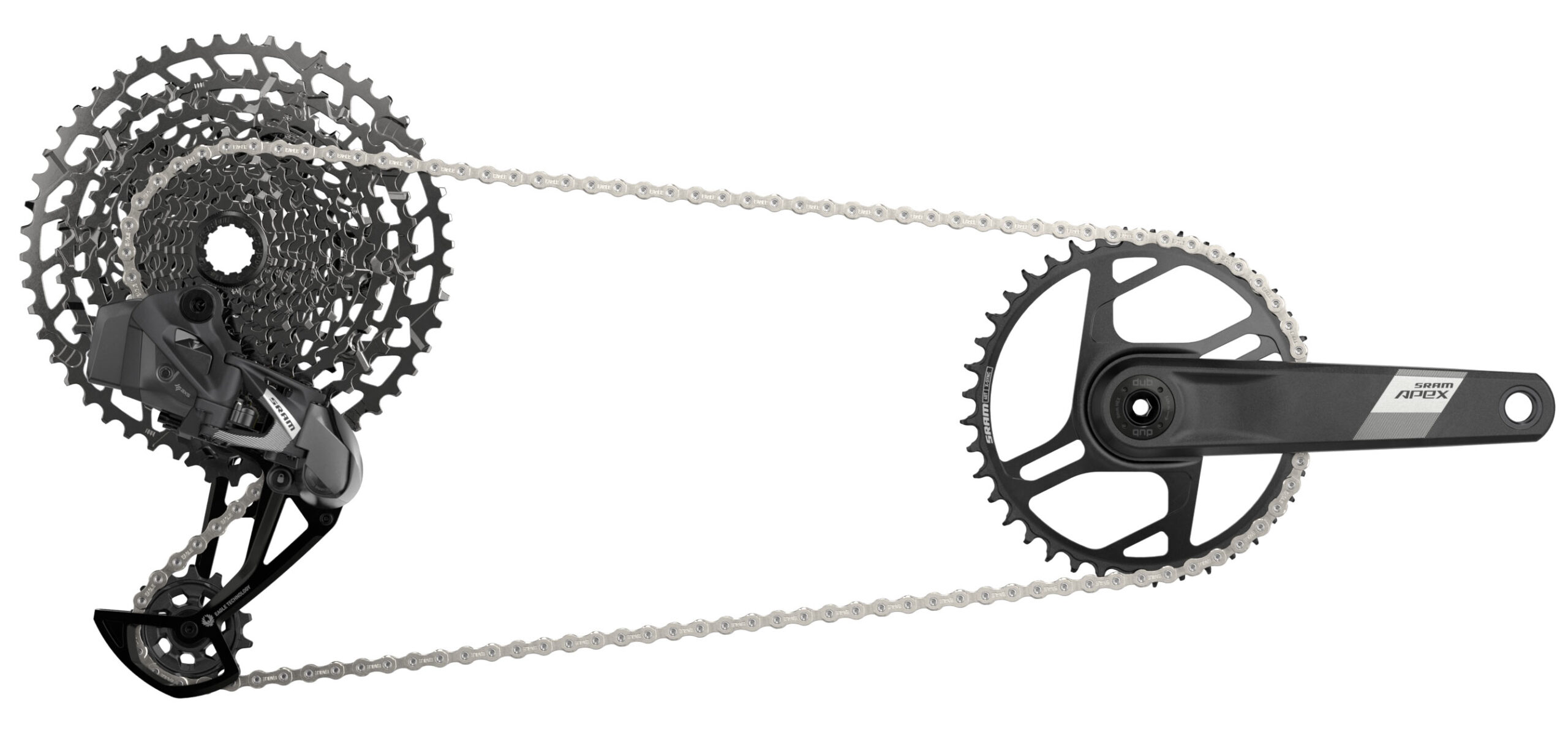
Crank lengths offered are 160/165/170/172.5/175mm. Chainrings come in 38-46 tooth counts, and OE parts have a new steel chainring option, aftermarket will get alloy chainrings.
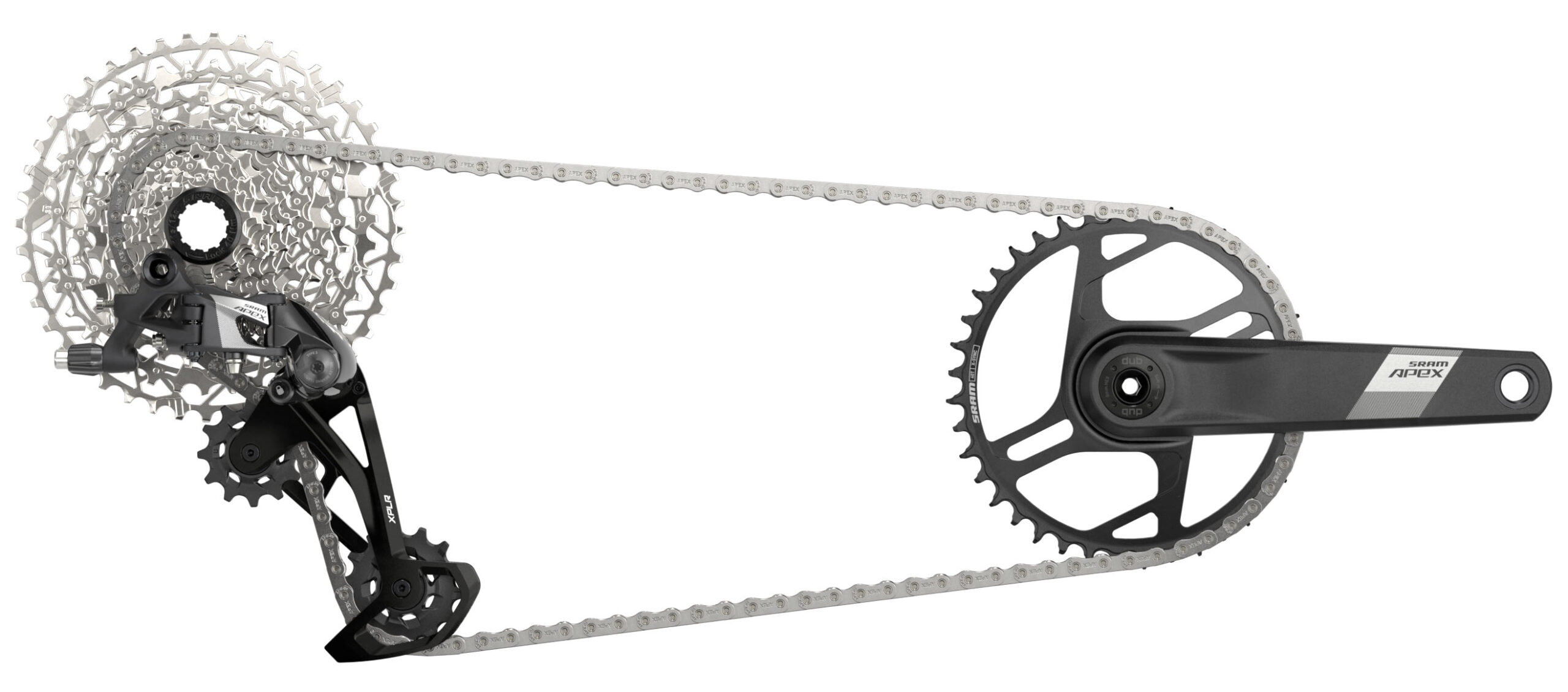
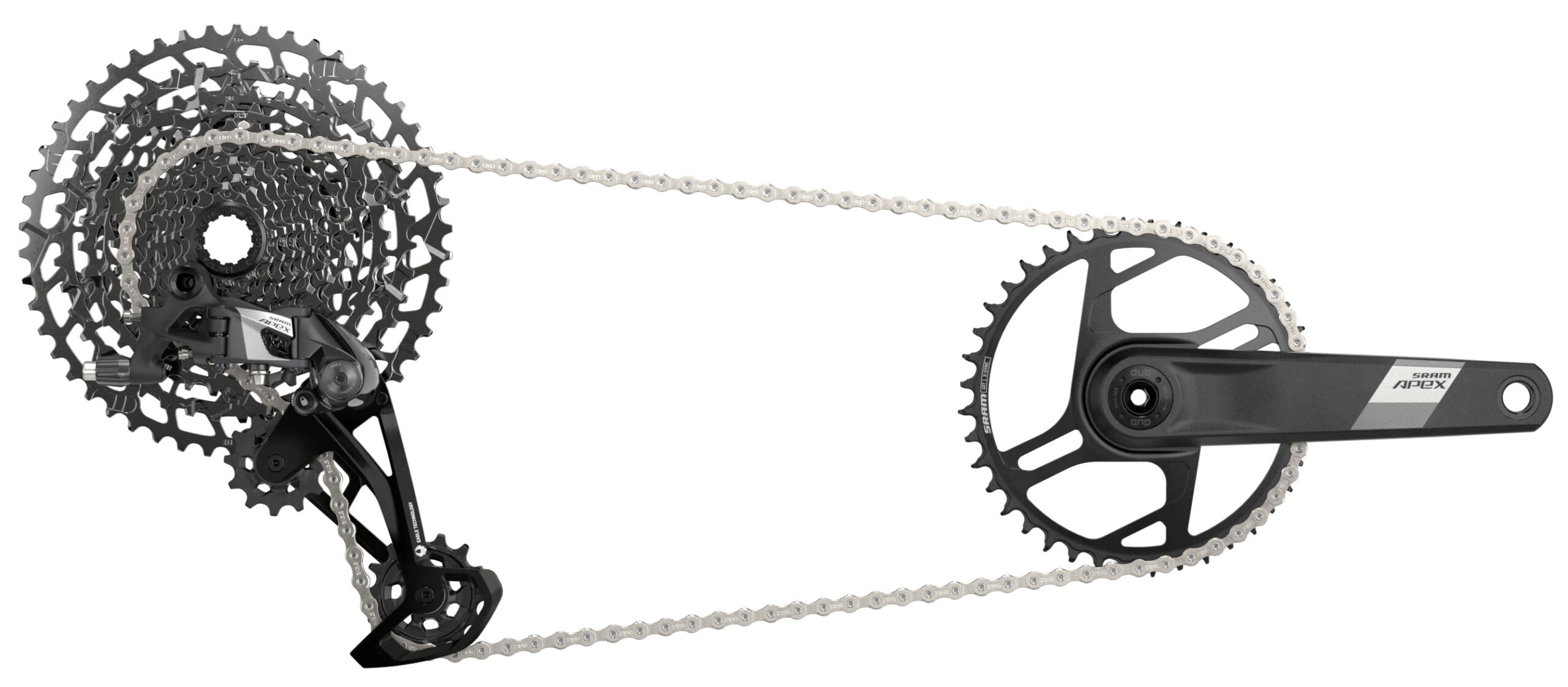
Apex Mechanical follows in September. Expect it to show up on bikes ranging from $1,850 to $2,000 with Apex Mechanical.
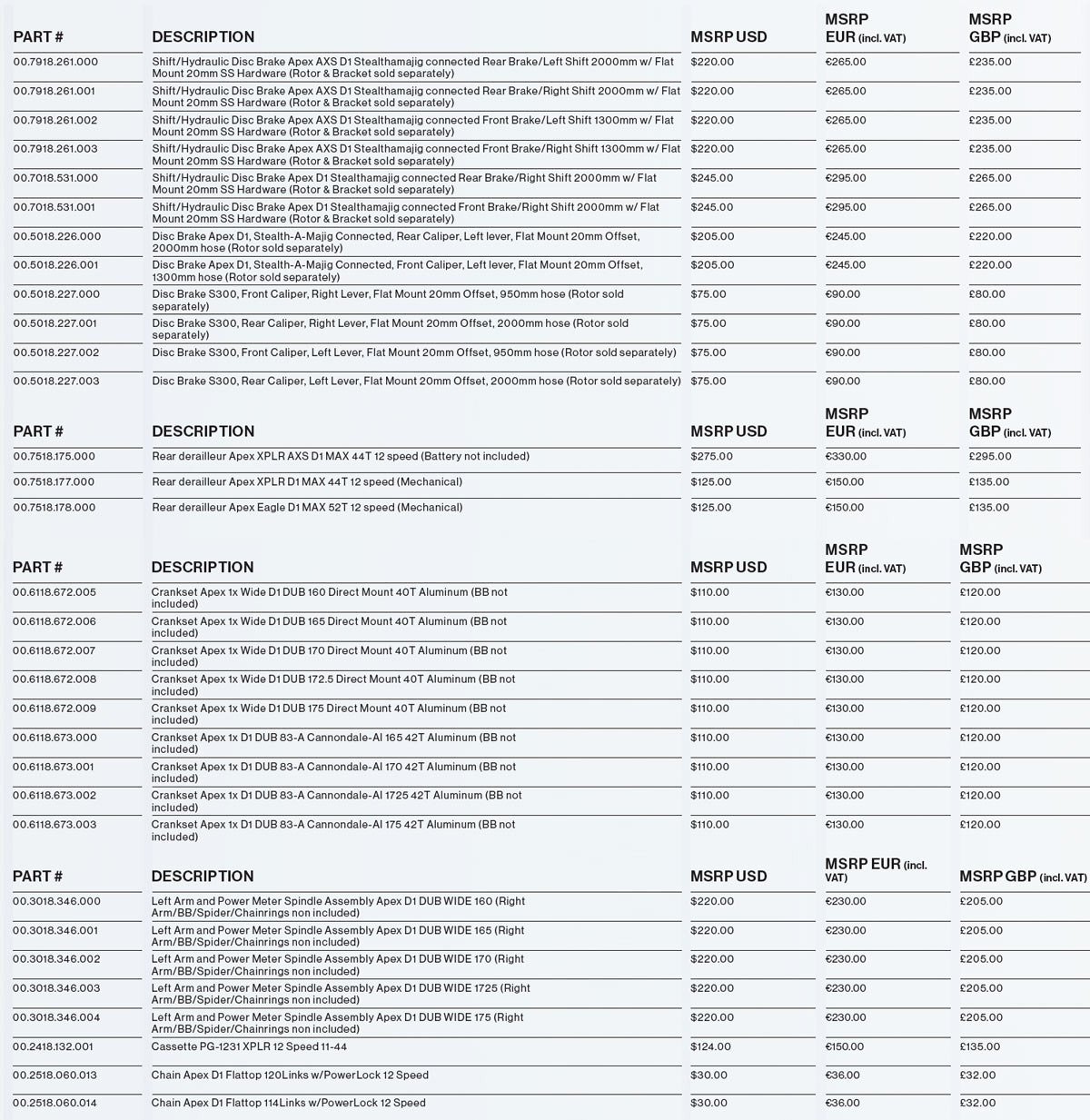
Complete group prices are (include VAT for £/€):
- Apex AXS XPLR – $1,195 / £1262 / €1411
- Apex AXS Eagle – $1,294 / £1303 / €1460
- Apex AXS Flat Bar XPLR – $1,063 / £1099 / €1225
- Apex AXS Eagle Flat Bar – $1,162 / £1140 / €1274
- Apex mechanical XPLR – $987 / £1060 / €1176
- Apex mechanical Eagle – $971 / £1035 / €1149
- Apex mechanical XPLR Flat Bar – $696 / £730 / €811
- Apex mechanical Eagle Flat Bar – $680 / £705 / €784
Complete group claimed weights are:
- Apex AXS XPLR – 2,890g
- Apex AXS Eagle – 3,181g
- Apex mechanical XPLR – 2,872g
- Apex mechanical Eagle – 3,062
Individual parts weights have not been announced, but we have groups on the way for long term testing.
